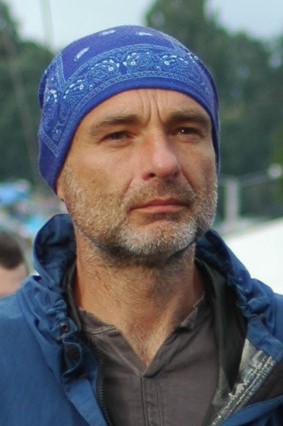 Ryszard Kulik – doctor of psychology, naturalist, columnist of the monthly “Wild Life” magazine, author of books devoted to man-nature relations, including “Man Towards Nature”, “Discovering Nature” or “Treading Strongly on the Ground”.
Ryszard Kulik – doctor of psychology, naturalist, columnist of the monthly “Wild Life” magazine, author of books devoted to man-nature relations, including “Man Towards Nature”, “Discovering Nature” or “Treading Strongly on the Ground”.
Mark writes: I’m very grateful for this guest blog from Poland about the conflict over Bialowieza. The English is almost perfect and I haven’t tinkered with it at all as I reckon it gets its message across well. Please respond in Polish – no, only kidding!
The deepest reasons of a battle about Bialowieza Forest
The Bialowieza Forest – the one and only primeval forest in Europe – is currently a subject of a battle about how all the forests should be like. The appearance of a small bark beetle has provoked important questions about forest management, human intervention in natural processes, and generally our approach to nature. These questions were followed by answers in the form of enormous tree logging ordered by the Polish Ministry of the Environment. This, however, triggered the reaction of nature defenders blocking the harvesters – heavy machines felling hundreds of trees day by day.
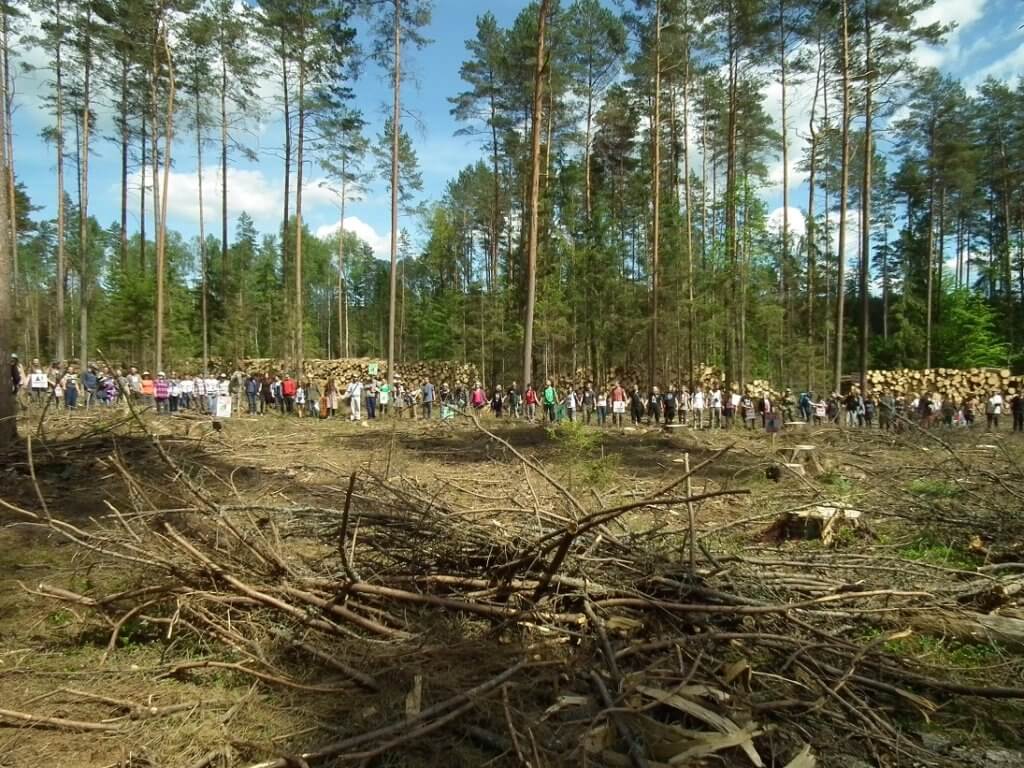
Foresters argue that they have a right and even an obligation to fight off actively the threat of the bark beetle. If the forest is ill and the trees die, then appropriate measures must be taken to cure the disease. After all, we do the same thing when we get infected – we go to the doctor and take a remedy to eliminate the bacteria or viruses. Not that the whole of the forest economy is geared to keeping the forest environment in balance and ensuring a sustainable harvest of wood. For this reason, foresters constantly intervene in natural processes: they prepare area for planting, harvest seeds of trees, decide what and where should grow, soot, fertilize, spray, fight pests, make thinning, and when the trees reach the age of cuttings – cut them. In all of these – as they say – they try to imitate nature. They argue that if suddenly one of the elements of this jigsaw puzzle falls out, the whole forest is threatened. That is why they have the feeling that the forest without them will not survive. It must be under constant control of the man, it must be led on a leash, otherwise…
Environmentalists, however, know very well what would be “otherwise”. And they keep calm, trusting spontaneous natural processes. Especially when it comes to the Bialowieza Forest. There is a piece of forest that has never been on foresters’ leash for almost always that means for some 10-12 thousand years. The strict nature reserve of the National Park is the place where nature governs itself. There is no forest management there, even the presence of people in this area is limited in space and number.
According to what foresters declare, this piece of forest should be dead long ago.
What is a forest?
And indeed, some foresters and scientists are alarming that in the strict reserve there is a real tragedy for the forest. For example, Jan Lukaszewicz of the Forest Research Institute believes that this is related to the remaining of a large number of dead wood in the forest and passive acceptance of the hornbeam expansion that replaces other species of trees. Evidence of this is provided by specific data and scientific arguments.
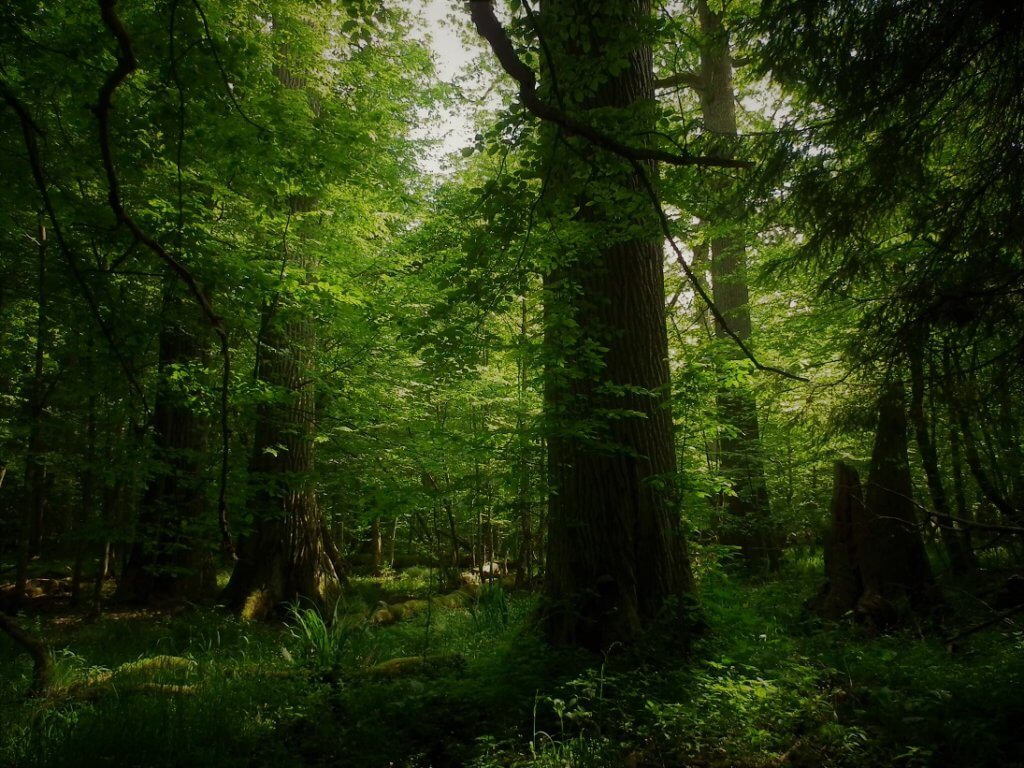
But there are other studies which show that passively protected forest is better than the one in which economic treatments are being conducted. Tomasz Wesołowski from the Department of Forest Biology at the University of Wroclaw emphasizes that hornbeam is a basic species of dry ground, and these have a significant share in the spontaneously growing forest communities predominating in the Bialowieza Forest.
However, the problem is, that the hornbeam has no economic value and that the economic forests were being cleared for more economically valuable tree species. At this point, we arrive at the basic controversy connected with the question: what is a forest? Proponents of interference in nature see it mainly as a stand to serve man. On the other hand, for nature conservation advocates, the forest is a dynamic creature in which plants, animals, fungi together with the soil, water and climatic factors form a mutually interrelated whole. In this whole there are no more or less noble species, no useful or harmful – all are equal and essential.
Forest like potato field.
In a sense, foresters are right. Just like a farmer growing potato field. What you need to do is plough the field, plant the potatoes, look after how they grow, fight pests, and at the right time pick up what has grown and repeat the whole cycle from the beginning. Potatoes do not plant and take care of themselves on their own. If you want to have them on the plate, you have to roll up your sleeves and work hard, constantly looking at the crop.
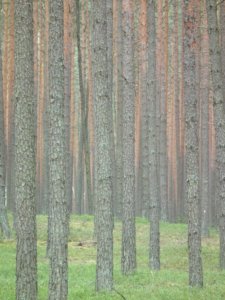 The foresters have learned how to grow a forest for many years. And then they use this knowledge in practice. They are like forest farmers, without whom nothing will grow as it should be. Of course they keep saying to themselves and others that in their work they only imitate nature. But the effects can be seen when comparing the typical economic forest with the strict reserve of the Bialowieza National Park. If the forester mimics nature, why are economic forests so different from those in which nature rules itself? They are as different as the forest is different from the field of potatoes.
The foresters have learned how to grow a forest for many years. And then they use this knowledge in practice. They are like forest farmers, without whom nothing will grow as it should be. Of course they keep saying to themselves and others that in their work they only imitate nature. But the effects can be seen when comparing the typical economic forest with the strict reserve of the Bialowieza National Park. If the forester mimics nature, why are economic forests so different from those in which nature rules itself? They are as different as the forest is different from the field of potatoes.
Natural forests are like remorse for the foresters. How does it happen that without human help the forest can grow at all? It is a real undermining of the sense of omnipotence and justice, a knife plunged into the back of the foresters’ knowledge and competence. The economic forest to a natural forest is like fish in aquarium to a coral reef. So it is necessary to do something with this dishonour so that the feeling of shame and embarrassment does not hurt like a pebble in the shoe. It is best to level down to average by deprecating the natural beauty or by pretending the authorship of it. The Bialowieza Forest planted by a man’s hand, sounds as grotesque as the belief that it is me who by my willpower can digest fats, sugars and proteins, and then distribute them throughout the body.
Of course there is nothing wrong with growing potatoes. There is also nothing wrong in getting wood from our forests. But the forest is not a field of potatoes. The forest may not be a crop as it currently is and yet provide a valuable raw material. The ecologisation of forestry and the decisive departure from forest production is a real challenge for modern foresters.
First and foremost, however, it is not appropriate to sacrifice a pearl like the Białowieza Forest, which occupies just 0.6% of the forest area in Poland and turns it into something that resembles a field of potatoes. It is as absurd as the idea to demolish Royal Castle of Wawel in Cracow and use its bricks to build a housing estate … The forest is much bigger than the crop, and the bark beetle in it is a real scalpel in Nature’s hands. Foresters emphasize that if bark beetle attacks spruces, it must be fought like any infection or cancerous excrescence. But in essence, the bark is a true forest doctor. The forest as an intricate organism evokes bark to heal it of illness, removing what is unnecessary. But these self-regulating processes once again do not fit within the narrow perspective of a forest farmer who must manage and trust no one but himself.
Values before science
In the dispute over the Bialowieza Forest, both sides of the conflict juggle scientific arguments. And both are… right. If you see the forest as a complex ecosystem, it certainly does not require human intervention. If the forest is a wood-producing plant, then in order to achieve the assumed profitability, it is necessary to control the natural processes as foresters do in the business forests.
Science is not able to answer the question of how the forest should look. This question directly refers to the sphere of values, to our ideas and beliefs about nature.
This is a very important moment in investigating what is really going on in this confusion with the Forest. It turns out that scientific arguments are secondary to philosophical assumptions. They make a real difference. On the one hand, we have a paradigm of control and domination that gives us the privilege and even the obligation to interfere with the natural process, because we know better how it should look. According to this assumption, humans are the crown of creation and the measure of all things. They subdue the earth. On the other hand, we have an ecological paradigm in which we subjugate the whole or the process, believing that it “knows better”. In this approach, we are only one of many participants in the miracle of life. Of course we have the right to take care of our business, but at the same time we have a duty to listen carefully to the needs of nature.
Psychology before philosophy
But it is not over yet. Can you ask what is the source of such or other beliefs? What makes us either willing to succumb to nature or thinking it is necessary to interfere with it?
These questions directly relate to the psychological sphere. Finally, it turns out that philosophical assumptions are secondary to psychology.
So what do we find when we explore the psychological mechanisms responsible for adopting certain philosophical assumptions? If the basic question in the assumptions is the problem of reality control, it directly leads us to the emotional sphere. Under forced control there is anxiety. It does not allow us to accept calmly natural processes. That is why you still need to do something, change, interfere, improve or manage. Because if not, then … maybe something bad will happen to us. It is this emotion above all that arms up our civilization tools used in the continuous process of adapting the world to our expectations.
When we look around, almost everything in our environment is changed so that we do not feel bad. Total control is a method to remove all the suffering from our life.Where wilderness is, we can never guarantee that things will go as we wish. Acceptance of the natural process is a consent to suffering.
And people differ among themselves as far as they are willing to experience suffering. These preventers will continue to do something to minimize the likelihood of an adverse (for them) scenario. Those less frightened, are ready to take in the greater part of what is unfavorable. And more adapt to what it is than to govern in absolute terms.
With such mental-emotional matrices we approach nature. And the nature, how it reacts? Is the forest afraid that it will grow badly? Is it afraid that the bark beetle or dead wood will harm it? Is the forest worried that when it is not cut, it will die? Is nature worried that there will be less life in it when this life will freely and naturally evolve?
Our fears are not the fears of nature. Water does not have to be afraid that it will be less wet.
Georgy Bateson, a British cultural anthropologist, says that “all our problems are the result of the difference between how nature works and the way people think.
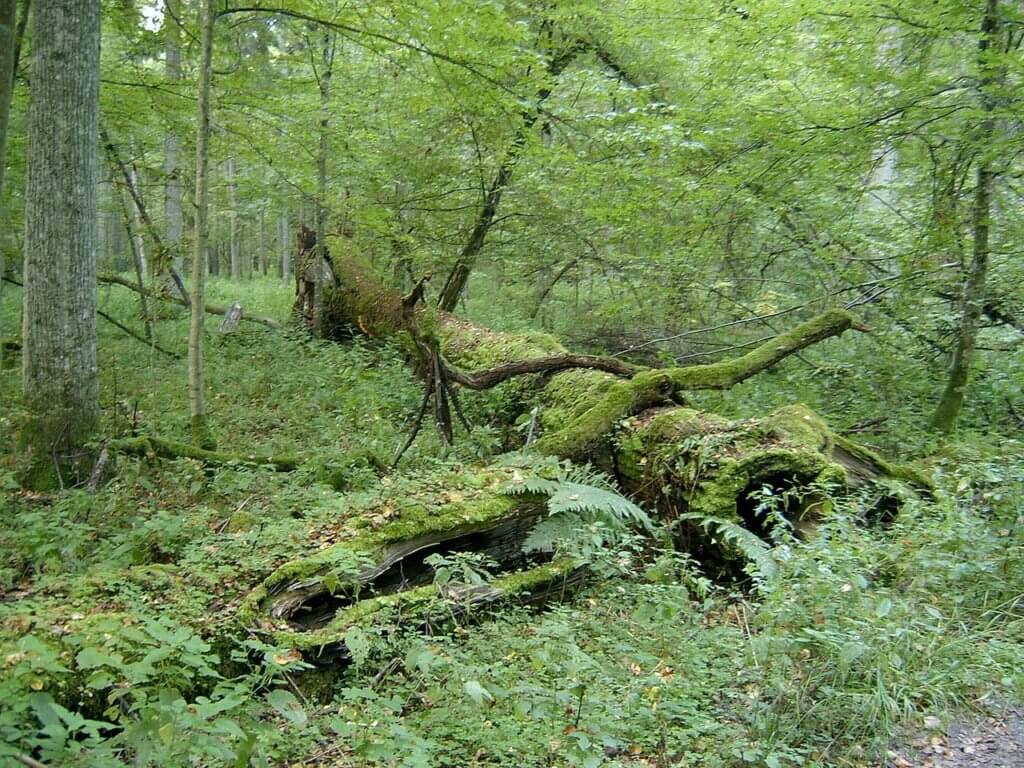
Superb blog. One of the best I have read.
The best explanation I have read on the different philosophies of the farmed versus at truly wild landscape. There is so little left in Europe of the truly wild landscape and we should at all costs leave it to be truly wild.
Let’s leave this amazing forest to do what comes naturally. Let humans not interfere – ever. It is not a crop to be harvested but nature taking it’s course. One small drop of virgin forest in the vast sea of managed trees, (and land), across Europe. We need both but it is vital that we leave something to be left alone without human interference – just for once! Otherwise we have nothing to compare our intervention with something completely natural, to thrive or die. PLEASE – LEAVE IT ALONE! Thank you.
And then we have Ennerdale! [Not Emmerdale!] in the new ‘World Heritage site’ England’s answer to rewilding. Oh dear! It has also been struck by a disease. https://forestry.gov.uk/pramorum so what does it do ? Clear fell all its larch. Give warnings to dogs carrying sticks! But not to mountain bikes riding all over the place carrying the disease.
The whole place is alive with Sitka Spruce regen and not a beetle in sight when you want one. Even Sycamore is under attack not by disease but humans! Lets make the valley natural!Beech every where and regening much faster than the Sycamore with its helicopter seed!
Like Bialowieza humans are trying to create a perfect Forest
As Bialowieza has stood for so long why now the beetles are attacking this ancient woodland. Where are the predators to take advantage of this beetle harvest? Long ago I worked for the Forestry Commission on the Welsh Border and was cutting down Larch while poo from caterpillars rained down in my long hair [those were the days!] and the Blue Tit and Willow warbler population exploded and the caterpillar poo was added to the Starling poo as flock after flock of Starlings rained down on the sawfly caterpillars.
Not a word from Poland of this effect creating large bird populations especially the 9 species of woodpeckers. Why?
Re-wilding indeed Phytophthora ramorum kills the non native Larch so it is felled yet it is sick larch that is the problem spreading fungal spores with its falling leaves and neither Beech, Sycamore or Sitka Spruce are native to Cumbria. So they may create a wild wood but it will not be a ” British native” wild wood.
A really thought provoking blog. You should probably steer clear of conservation-managed woodland in England as I’m not sure you would approve. You would find the mind-set of feeling the need to exert control very clearly on display. Many of our conservation woodlands have small compartments with rectangular blocks felled on a regular cycle to encourage light to the ground in order to provide good conditions for declining butterflies (and some other species). Because that reduces the number of old trees and dead wood, the bats and hole-nesting birds are provided with large numbers of special boxes. You don’t even need to get your feet wet because there will be boardwalks winding through the trees. And if you want to find out what wildlife is using the wood you can read that on one of the many white plastic information boards. Woods that have somehow escaped the rigors of this regime are referred to by conservationists as ‘neglected’.
Great comment, Ian (and a good blog too). All UK conservationists who manage woodland should really visit Bialowieza to see what natural woodland looks like – with all of its standing dead wood, numerous holes, fungi and water.
Bialowieza is a very special place and gave my family and me a once in a lifetime wildlife experience – watching a lynx for 75 minutes, at one point from only 10m away – amazing!
I thought there were woods ‘down south’ left after the big blow 1987 to see what would happen? I remember working in a Yew wood seeing the effect of regen and found wind blown seeds were sucked into the holes in the canopy to create new life.
Thank you for this article and thanks to all of you for your solidarity with us and the forest.
Bardzo dziękuję za ten mądry artykuł i pozdrawiam.
Ania – welcome to this blog, thank you!
18th July and still logging! Must be ‘back hands’ at play here! What a world we live in.
Very interesting piece, which raises some questions.
Is the Hornbeam spreading in the non-intervention zone or only in the buffer zone? If it is spreading in the non-intervention zone, why is this happening? Has something changed that has caused this spread.
I think we should explore the psychology behind the idea of Virgin Forest. There is considerable debate about how closed or open our European Forests were, naturally. You can take your pick as to whether (and to what extent) humans and their influence are part of the natural or not, but the role of large herbivores and carnivores can’t be ignored.
Hornbeam spread may be partly caused by climate change – Spruce is a glacial species and nowadays it moves north more and more. Besides Forest has its own dynamics and scientists only now make research why is that in some epochs spruce dominated, in others oak and today hornbeam…
Barbara – welcome! And thank you for your comment.
Reminiscent of a too short visit to the natural ‘old growth’ coastal forests of western British Colombia. I concluded that the living trees were but a very small part of the whole: an occasional ‘fruiting body’ out of the mass of standing and fallen dead wood, mosses and bryophytes. They were as different from the fantastic Douglas fir groves on the outskirts of Vancouver as they were from a potato field too!
Spot on – there are actually regular calls for older trees to be felled as they are ‘diseased’ – which begs the obvious question how have forests not succumbed to this in the 300 million years plus in which they’ve existed and foresters haven’t. The public ignorance on this issue is astounding – we now have manufacturers of virgin fibre toilet paper claiming buying it means they plant trees – i.e ones to be turned into toilet paper as soon as they are big enough, it’s becoming ludicrously difficult to find anywhere that still sells recycled bog roll – how is that going to help to save and create natural(ish) forest? 16 years ago I did a rather impromptu survey on how recycling schemes were promoting their work to the public/businesses. I found one, only one, reference to the fact that making paper resulted in wildlife poor plantations often replacing natural forests out of dozens and dozens of projects I approached. Readers here almost certainly have a council run recycling scheme in their area – how many have been told that recycling helps save natural forest and its wildlife whilst creating more jobs than forestry which is becoming ever more mechanized? I got into recycling because of these reasons and yet they are virtually absent in its promotional/educational work, incredibly frustrating – in the form of local recycling projects we actually have a very extensive platform that could and bloody well should encourage a much saner view of wood based products and do so much to help Bialowieza and so much else.
“ludicrously difficult”
Not surprising given the difficulty of separating it at source
The British Museum has requested you return that joke to them Filbert.
one has to be careful with recycled bog roll, provenance is but one factor.
Long, long ago in a board room just north of Landskrona I listened to a presentation by an enthusiastic Dr Bloke about his work producing cloned F1 Norway Spruce using cell culture. Field trials were used to identify clones exhibiting rapid growth, and presumably the potential to be a world-beating plank. The best clones would be “multiplicated” in their millions in laboratory-grade nurseries and planted on clear-felled land using crawler-buggies and automated soil augers. This was to enable Sweden to maintain its 80% share of the timber export market from 20% of the planted area (there’s that golden ratio again). Given that a genetic clone really is homozygous, unlike inbred cereal lines that may not be completely so, and thus the plantings were likely to be completely uniformly susceptible to any adapted disease or pest, and given the very long timescales involved even for fast-growing trees making the returns on investment quite precarious, what could possibly go wrong? – I asked.